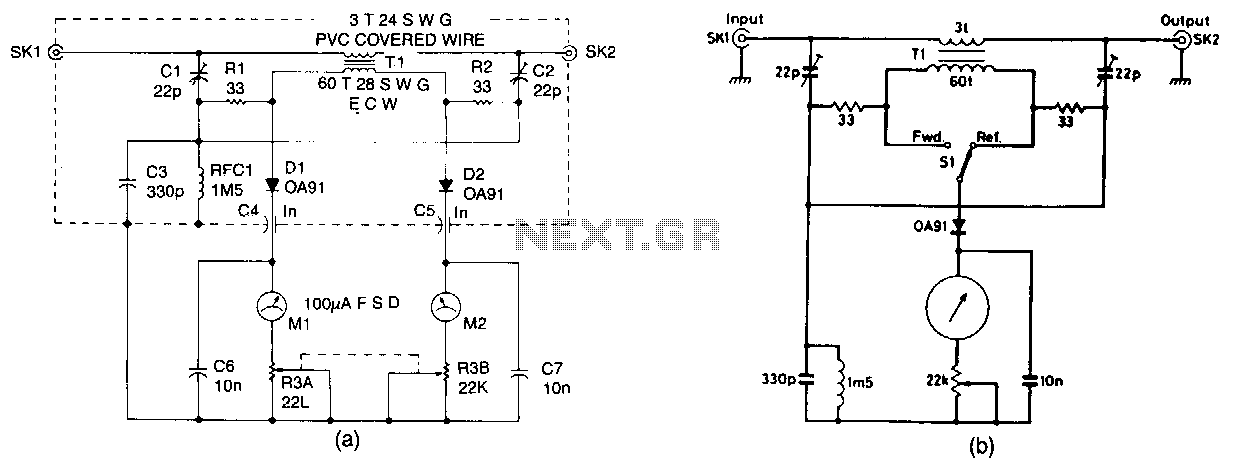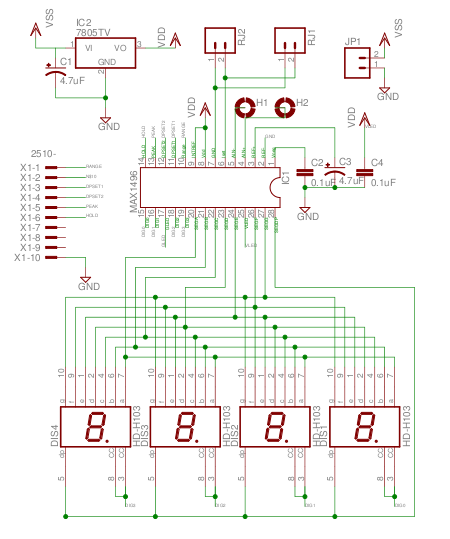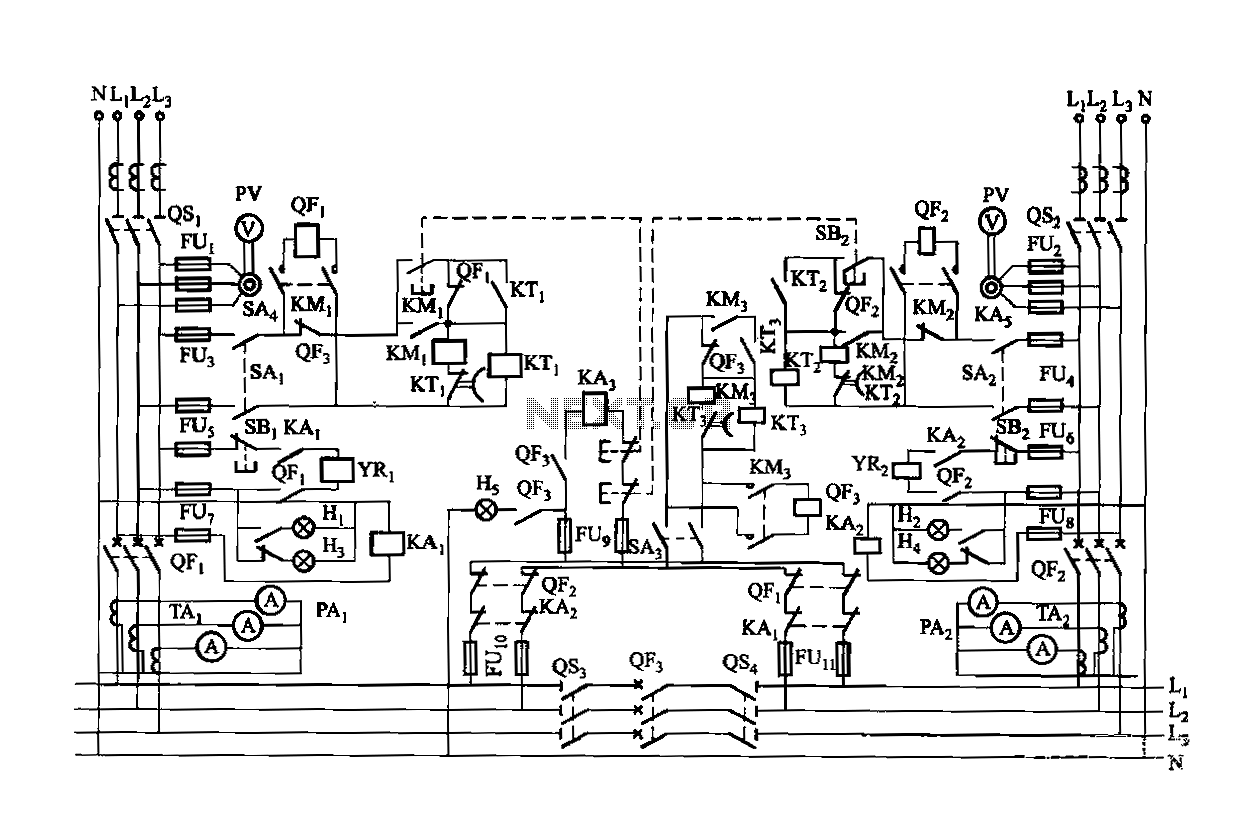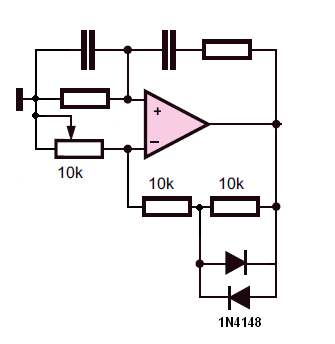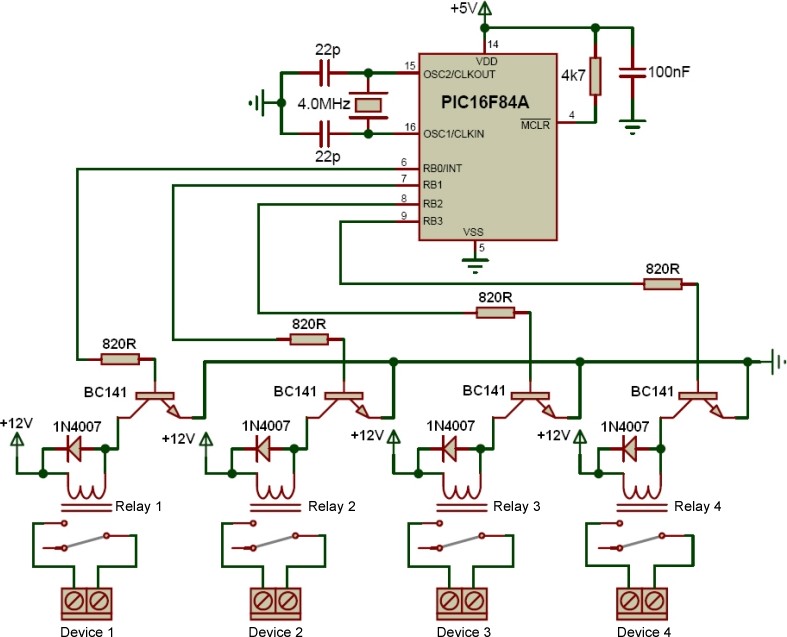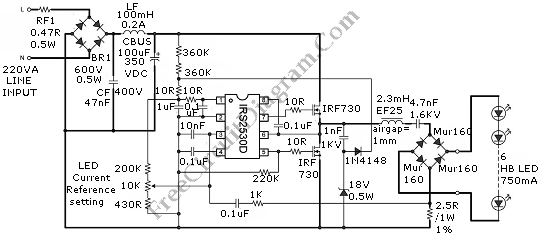
NJM2670 NJM2670 DUAL H BRIDGE DRIVER

The NJM3772 is a stepper motor driver circuit specifically designed for microstepping applications in conjunction with the compatible dual DAC (Digital-to-Analog Converter) NJU39610. The NJM3772 features a clock oscillator that is shared between both driver channels, a set of comparators, and flip-flops for implementing switching control. It also includes two H-bridges with internal recirculation diodes. The voltage supply requirements are +5 V for logic and +10 to +45 V for the motor. The maximum output current is 1000 mA per channel.
The NJM3772 stepper motor driver is engineered to provide precise control over stepper motors in applications requiring high resolution and smooth operation. The integration of a shared clock oscillator allows for synchronized operation of the dual driver channels, which is crucial for achieving microstepping functionality. This feature enables the stepper motor to operate at fractional steps, enhancing the positioning accuracy and reducing vibration compared to full-step driving methods.
The inclusion of comparators and flip-flops in the NJM3772 design facilitates the implementation of advanced switching control strategies. These components work together to ensure that the motor phases are energized in a manner that optimizes torque and minimizes power losses. The internal H-bridges are capable of bidirectional control of the motor phases, allowing for both forward and reverse motion. Furthermore, the presence of internal recirculation diodes protects the circuit from back EMF generated by the motor, enhancing reliability and longevity.
The voltage supply requirements of +5 V for logic and +10 to +45 V for motor operation provide flexibility in system design, accommodating a wide range of stepper motors with varying voltage ratings. The maximum output current of 1000 mA per channel ensures that the NJM3772 can drive most small to medium-sized stepper motors effectively, making it suitable for applications in robotics, CNC machinery, and various automation systems.
Overall, the NJM3772 stepper motor driver, when paired with the NJU39610 DAC, offers a robust solution for microstepping applications, delivering precision control and reliable performance in demanding environments. Its design features and specifications make it a valuable component in the field of motion control and automation.The NJM3772 is a stepper motor driverwhich circuit is especially developed for use in microstepping applications in conjunction with the matching dual DAC (Digital-to-Analog Converter) NJU39610. The NJM3772 contains a Clock oscillatorwhich is common for both driver channelsa set of Comparators and Flip-Flops implementing the switching controland t
wo H-bridges with internal recirculation Diodes Voltage supply requirements are +5 V for Logic and +10 to +45V for the motor. Maximum output current is 1000mA per channel. 🔗 External reference
The NJM3772 stepper motor driver is engineered to provide precise control over stepper motors in applications requiring high resolution and smooth operation. The integration of a shared clock oscillator allows for synchronized operation of the dual driver channels, which is crucial for achieving microstepping functionality. This feature enables the stepper motor to operate at fractional steps, enhancing the positioning accuracy and reducing vibration compared to full-step driving methods.
The inclusion of comparators and flip-flops in the NJM3772 design facilitates the implementation of advanced switching control strategies. These components work together to ensure that the motor phases are energized in a manner that optimizes torque and minimizes power losses. The internal H-bridges are capable of bidirectional control of the motor phases, allowing for both forward and reverse motion. Furthermore, the presence of internal recirculation diodes protects the circuit from back EMF generated by the motor, enhancing reliability and longevity.
The voltage supply requirements of +5 V for logic and +10 to +45 V for motor operation provide flexibility in system design, accommodating a wide range of stepper motors with varying voltage ratings. The maximum output current of 1000 mA per channel ensures that the NJM3772 can drive most small to medium-sized stepper motors effectively, making it suitable for applications in robotics, CNC machinery, and various automation systems.
Overall, the NJM3772 stepper motor driver, when paired with the NJU39610 DAC, offers a robust solution for microstepping applications, delivering precision control and reliable performance in demanding environments. Its design features and specifications make it a valuable component in the field of motion control and automation.The NJM3772 is a stepper motor driverwhich circuit is especially developed for use in microstepping applications in conjunction with the matching dual DAC (Digital-to-Analog Converter) NJU39610. The NJM3772 contains a Clock oscillatorwhich is common for both driver channelsa set of Comparators and Flip-Flops implementing the switching controland t
wo H-bridges with internal recirculation Diodes Voltage supply requirements are +5 V for Logic and +10 to +45V for the motor. Maximum output current is 1000mA per channel. 🔗 External reference
